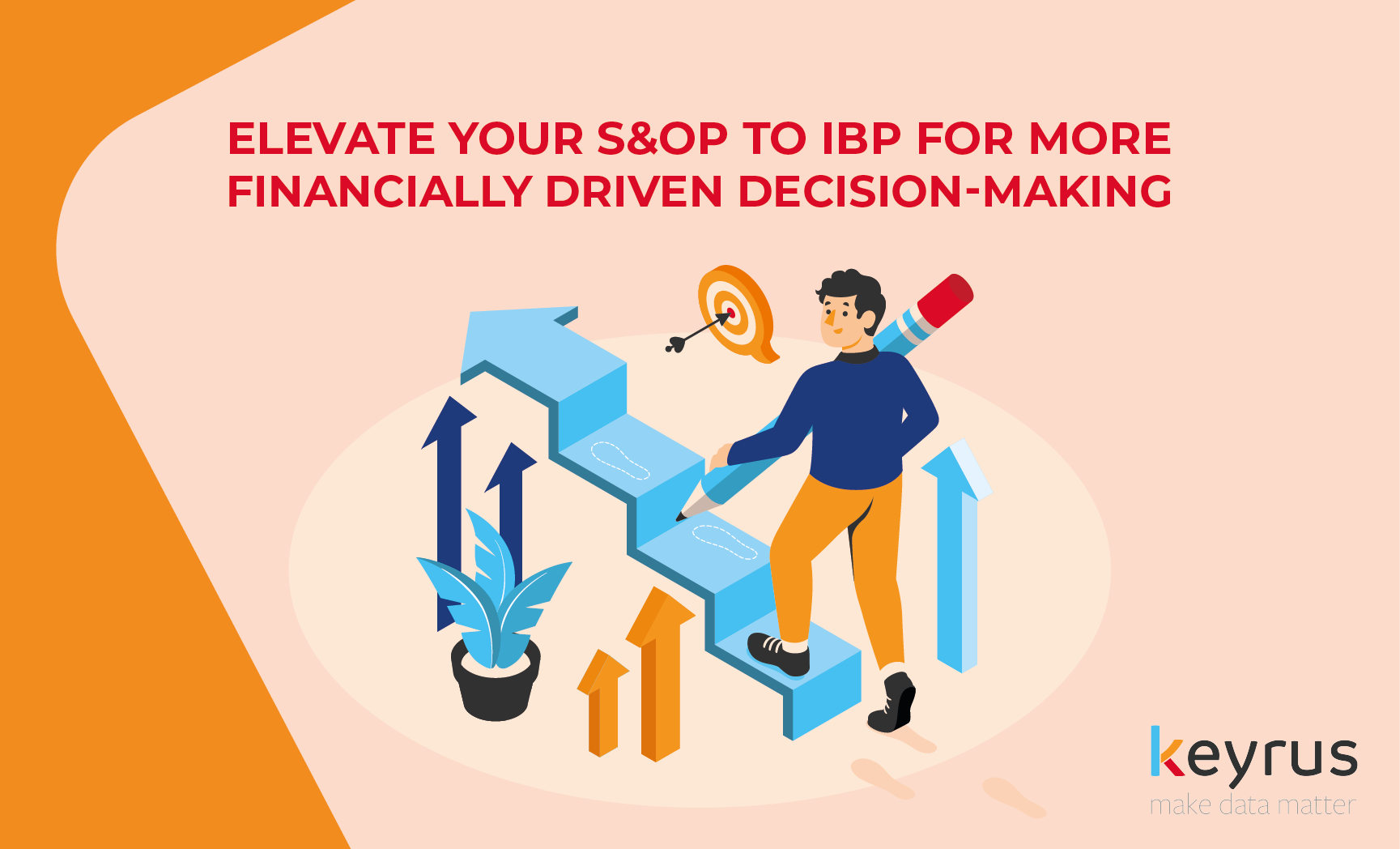It has been my experience that to get the best out of your S&OP (Sales and Operational Planning) process companies must embrace IBP (Integrated Business Planning). Here, my colleague Jort Cuperus discusses the process of moving from S&OP to IBP. You can significantly improve your company's market position by creating efficient business processes. By optimizing your supply chain and finance processes now, you will reap rewards in the future.
There is a lot of buzz around transitioning from S&OP to IBP . Supply Chain Planning has become a key component of business strategy as a result of a shortage of raw materials, long lead times, and increasing logistics complexities.
To overcome unpredictable challenges, your business processes must be optimized and your organization aligned.
Starting with S&OP
S&OP is a continuous decision-making process to balance demand and supply, and align production volume with sales volumes. This process culminates in a monthly meeting in which tactical decisions are made depending on the changing planning horizons. Within this weekly and daily operational decisions are supported by the S&OP process.
When looking at the short term, S&OP is used to forecast consumer demand fluctuations. Whilst in the long term, consumer trends need to be anticipated and forecasted.
For example, think about a company that produces carbonated beverages such as soda. It’s imperative to match supply (production volumes) and demand (sales volumes) as accurately as possible. Too many cans produced will lead to unnecessary inventory cost and waste cost due to the shelf life of the product. Planners must account for the shelf life of the product, as (for example) when this is shorter it can be more challenging to create accurate forecasts.
In contrast, too little production can result in poor customer service, such as not being able to deliver (on time), as well as possible loss of customers and sales throughout of stocks which has a negative impact on customer satisfaction and profits.
In order for the S&OP process to be optimized, the sales and marketing departments must work with operations teams to create a single production-and-shipment plan. Essentially, operations should be aligned with customer requirements and corporate strategy.
The balancing act of Supply vs Demand
A pivotal part of the S&OP process is the balancing of forecasted demand with planned supply. There are different aspects in which demand and supply can be influenced.
Supply can be steered by buffering capacity (overtime, flexibilization, hiring/firing, multiple shifts, or outsourcing of employees), buffering inventories (an increase or decrease in capacity stocks), or buffering time (production time increase/decrease with penalties and unhappy customers as potential downsides).
Demand can also be manipulated through different tactics such as pricing strategies (depending on the price elasticity of the product) as well as promotional activities. This should be done in conjunction with the financial objectives of the organization.
The balancing act of managing supply and demand is managed within the S&OP process in a company. That is the reconciliation of what is planned to be sold, with what can be supplied, to the overall financial goals of the business. S&OP is not about day-to-day planning, although this can be facilitated by the S&OP process.
Moving towards IBP
IBP as a term has been around since the 2000’s when the consultancy firm Oliver Wight introduced the term. Prior to this, the intellectual basis for connection between business strategy and supply chain strategies were limited. There was little or no emphasis on how supply chain strategy translated into real business value (quantity to value translation) and how internal supply chain processes were designed and aligned. The purpose of IBP is not to drive a better forecast with which supply chain can plan. It is the process that brings focus to the deployment of your business strategy and provides a framework for effective decision-making to drive growth.
The implementation of IBP can be a powerful bridge between strategic planning and operational execution. IBP links your key financial processes with your supply chain execution giving alignment across functional areas (finance, supply chain, sales, and marketing).
A key element of IBP is the connection between long-term top-down strategic planning (3 - 5 years) and bottom-up operational planning, which generally covers the 1 to 18-month period. The goal is to prepare and analyze different scenarios, with the ability to run 'what-if' scenarios and have a system in place that assists in the identification of potential gaps and facilitates their closure creating a single aligned plan.
With IBP and connected planning, the impact of supply chain on the income statement and balance sheet becomes apparent. Providing the best-in-class customer service can have a positive impact on sales revenue, and decisions regarding supply costs, capacity, planning and scheduling, inventory control, warehousing, and transportation can significantly affect the cost of goods.
Are you doing everything you can to elevate your S&OP to IBP transformation?
Why should organizations implement a proper IBP process?
Besides having a better understanding of your own business, implementing an IBP process ensures higher and more predictable profitability by increasing transparency and creating alignment between sales, operations, purchasing, and finance.
Companies that have implemented S&OP and developed maturity levels of IBP, reported significant increases in terms of profitability, on-time delivery, inventory levels, and cost reduction. Improvements are also made in capacity utilization, cycle time reduction, new product introduction, and planning performance.
Having a tool that connects your organization is essential for elevating your business planning. Keyrus has the experience to take you on your global or local implementation of S&OP and IBP solutions.
During our implementation projects, we have witnessed firsthand the benefits. Feel free to reach out to us – we are happy to advise you, wherever you are in your S&OP or IBP journey.
